#1 Philips 3200
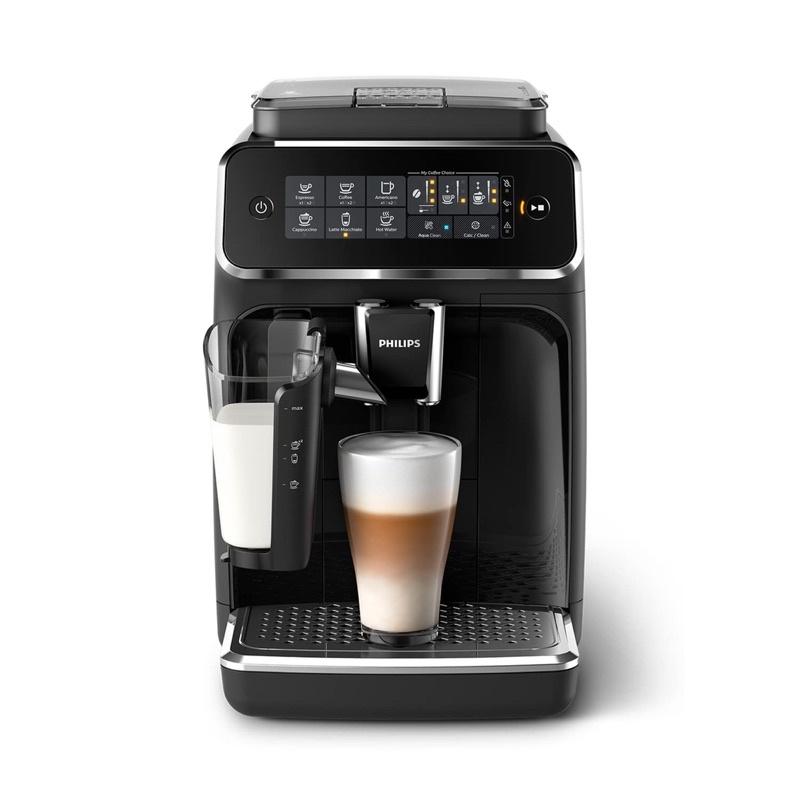
- Easy to use and navigate
- Affordable
- Compact design
#2 Philips 4300
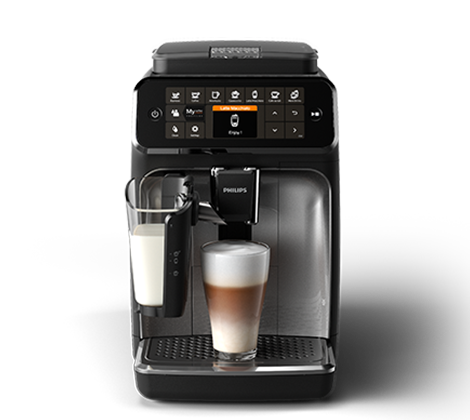
- Wide variety of drinks
- Intuitive touchscreen
- Compact with milk frothe
#3 Philips 5400

- Wide variety of drinks
- Advanced customization
- User profiles
As a self-proclaimed coffee lover, finding the right espresso machine has always been high on my priority list. Over the years, I’ve experimented with everything from manual espresso makers to high-end super-automatic machines. I stumbled upon the Philips 3200, 4300, and 5400, I couldn’t resist putting them to the test. After months of brewing, tweaking, and sipping countless cups, I’ve got plenty to share about these three contenders. Let’s dive in!
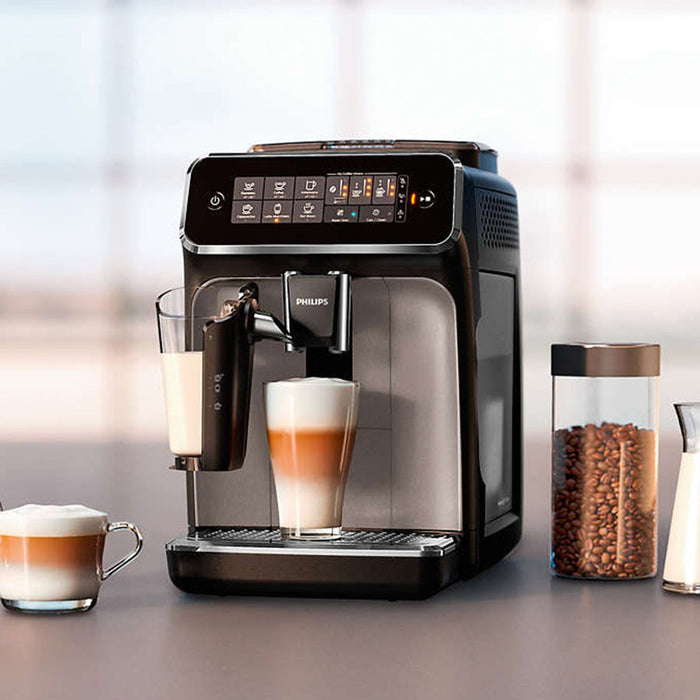
Philips 3200 vs 4300 vs 5400: Setup and First Use
Setting up these machines was surprisingly hassle-free. Philips provides clear instructions, and within minutes of unboxing, I had all three models ready to brew. The Philips 3200 is the easiest to get started with, thanks to its minimalist interface. The 4300 and 5400, while slightly more involved due to their added features, didn’t take long either.
From the start, I appreciated the removable water tank and intuitive menu systems. For someone who values simplicity in the morning, this was a huge plus. The machines also feature the AquaClean filter, which ensures the water is fresh and reduces the need for descaling. This feature alone adds a layer of convenience I hadn’t fully appreciated until I started using these machines regularly.
Comparing the Brewing Experience
The Basics: Espresso and Coffee
it comes to the basics, all three machines excel at delivering a rich, aromatic espresso. The Philips 3200, though the simplest, produces a consistently good espresso with a velvety crema. I found its presets to be spot-on for a quick, hassle-free brew.
The Philips 4300 steps up with more control over strength, temperature, and volume. It felt like I had my very own barista in the kitchen, tailoring my coffee just the way I like it. The 5400, with its 12 beverage options, offers even more possibilities, but I’ll admit I rarely used all of them. For my needs, the 4300 struck the perfect balance.
Specialty Beverages
If you’re a fan of milk-based drinks like cappuccinos or lattes, all three models feature the LatteGo system, which I found delightfully easy to use. The frothing is consistent and creamy, and the cleanup is a breeze. The Philips 4300 impressed me the most here, as its slightly more advanced interface made it simple to adjust the milk-to-coffee ratio.
The Philips 5400 offers the most versatility, even including flat white and ristretto as options. While I appreciated the variety, I didn’t find myself reaching for those options daily, which makes me think they’re more suited for someone who loves experimenting with different drinks.
Personalization Features: A Game-Changer?
One of my favorite aspects of the Philips 4300 and 5400 is the ability to save user profiles. In a household with different coffee preferences, this is a lifesaver. I could set up my ideal espresso strength and temperature while my partner customized her go-to cappuccino. The Philips 3200, while lacking this feature, still provides quick manual adjustments that work fine if you’re not sharing the machine.
For someone like me, who enjoys a consistent cup of coffee without tweaking settings daily, the user profiles were a standout feature that added to the overall experience.
Durability and Maintenance: Long-Term Usability
As someone who’s had their fair share of espresso machines break down prematurely, I paid close attention to the build quality and maintenance requirements. All three machines feel solidly built, and the removable brew group made cleaning a straightforward process. The LatteGo system also deserves praise for being so easy to disassemble and rinse.
The AquaClean filter is another feature that simplifies maintenance. It’s designed to reduce scaling, meaning I didn’t have to descale the machine as frequently. For a busy coffee enthusiast like me, this is a time-saver I didn’t know I needed.
Energy Efficiency and Noise Levels
One thing that surprised me was how quiet these machines are, especially compared to older models I’ve owned. The grinders operate smoothly, and the brewing process doesn’t disrupt the early morning calm. The Philips 3200, being the simplest model, is the quietest of the three.
In terms of energy efficiency, all three machines feature an automatic shutoff function, which not only saves power but also gives me peace of mind when I’m rushing out the door.
Who Should Choose the Philips 3200?
If you’re just stepping into the world of super-automatic espresso machines, the Philips 3200 is a great place to start. It’s straightforward, budget-friendly, and delivers excellent coffee with minimal effort. I’d recommend it for singles, couples, or anyone who enjoys simple coffee drinks without the need for advanced customization.
Why the Philips 4300 is the Sweet Spot
For me, the Philips 4300 hits the sweet spot. It offers more drink options and customization than the 3200, without the overwhelming complexity (and price tag) of the 5400. The user profiles are a practical touch that makes this machine feel tailored to my lifestyle.
If you’re someone who values variety and customization but doesn’t need an extensive menu of options, the 4300 is likely the best fit. It’s versatile enough to satisfy multiple preferences in a household, making it a fantastic middle-ground choice.
When to Splurge on the Philips 5400
The Philips 5400 is undoubtedly the top-tier option. It’s perfect for those who want an all-in-one solution that can cater to a wide range of coffee preferences. The extra drink options and additional user profiles make it a premium choice for larger households or coffee enthusiasts who love experimenting with different beverages.
That said, its higher price point might not be justifiable for everyone, especially if you only stick to a few go-to coffee drinks.
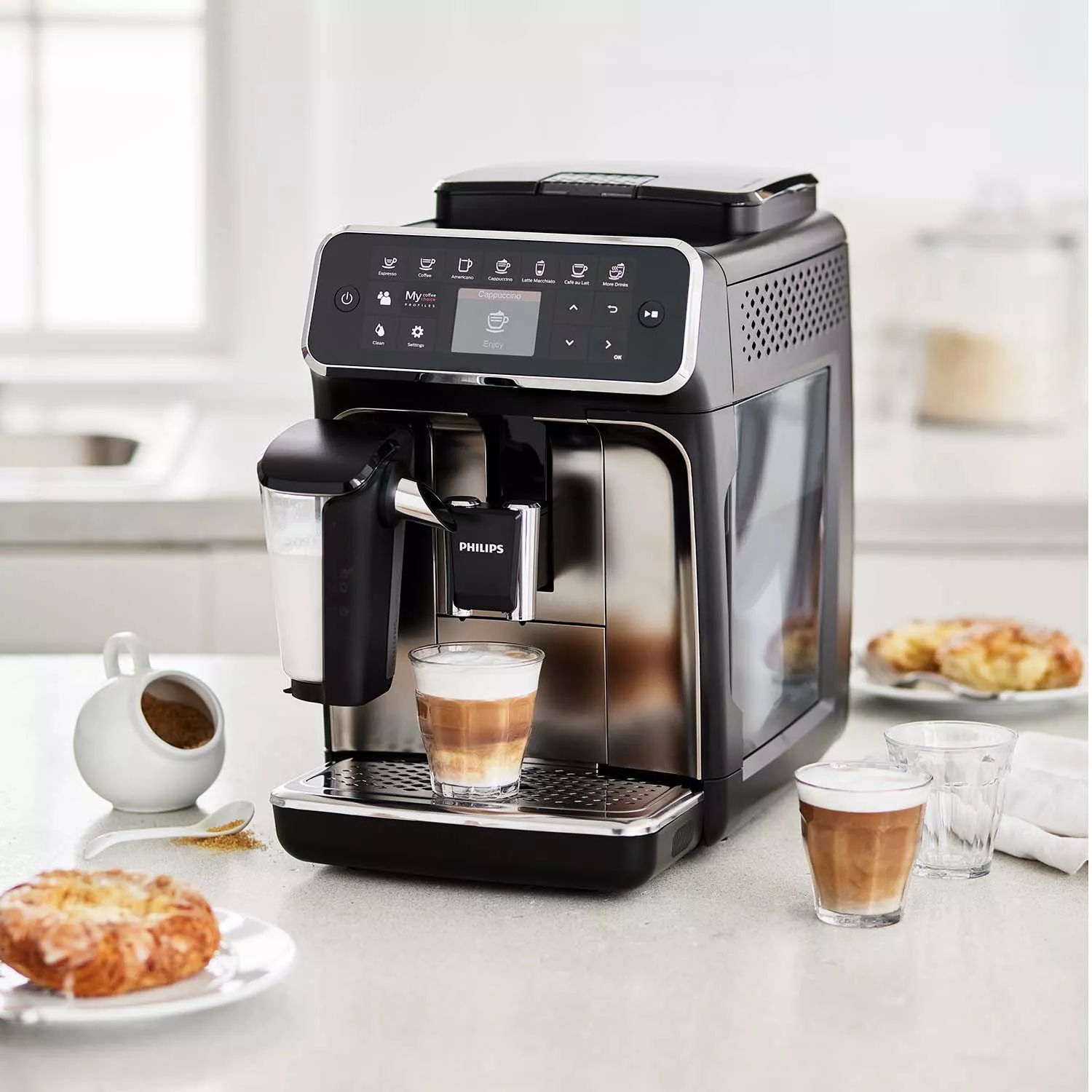
Conclusion: Philips 3200 vs 4300 vs 5400
After months of using these machines, I can confidently say they all deliver high-quality coffee with varying levels of customization and convenience. If you’re looking for simplicity, the Philips 3200 won’t disappoint. If you want the best balance of features, customization, and price, the Philips 4300 is a clear winner. And for those who want it all—every drink option and feature under the sun—the Philips 5400 is the ultimate choice.
Personally, I’ve grown attached to the Philips 4300. It fits seamlessly into my routine, offers enough variety to keep things interesting, and feels like a solid investment for my coffee needs. While each model has its strengths, the 4300 strikes the right balance for my lifestyle, making it a machine I’d happily recommend to anyone.
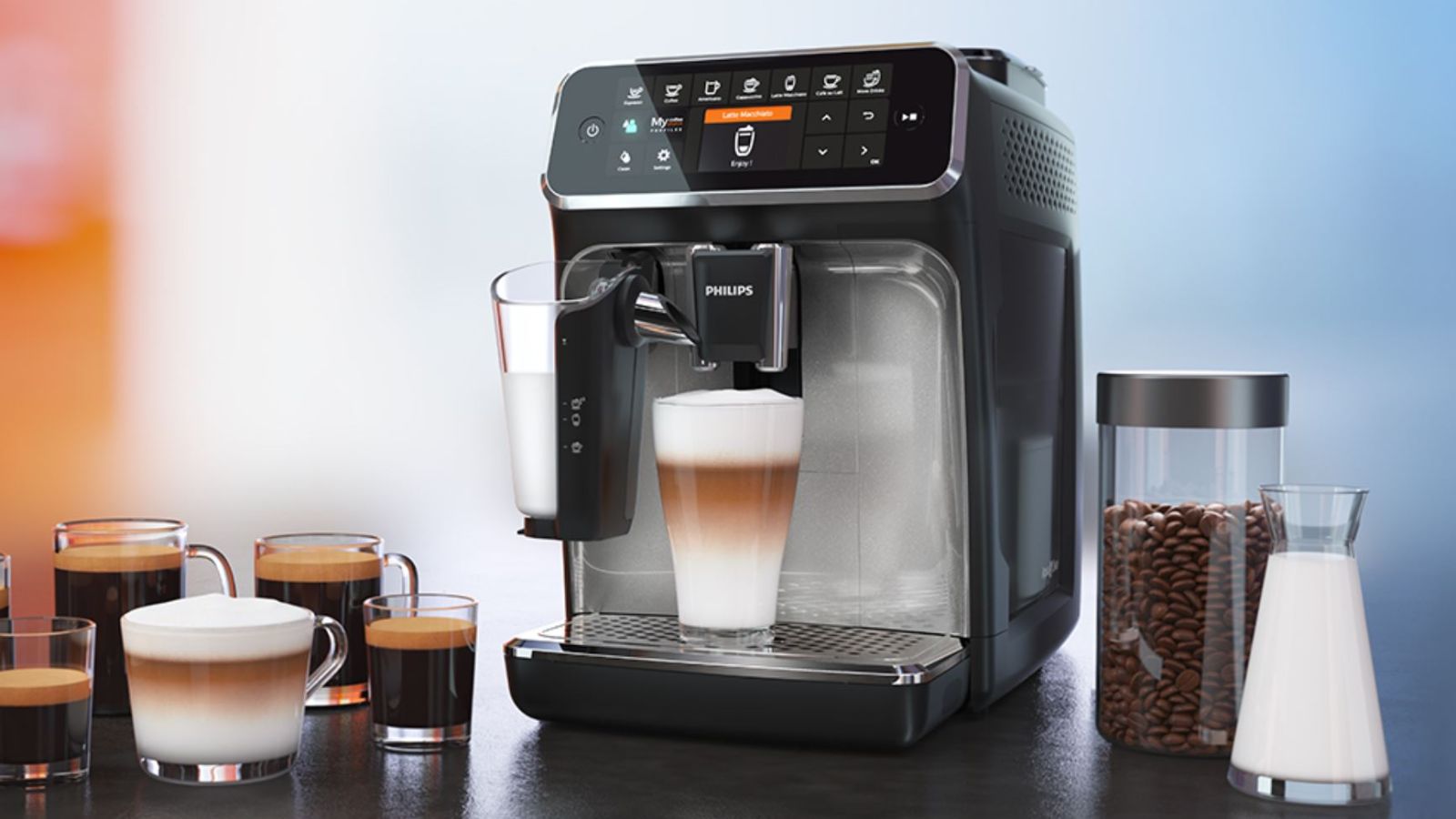
Frequently Asked Questions About Philips 3200, 4300, and 5400
1. What is the main difference between the Philips 3200, 4300, and 5400?
- Answer: The primary differences are in beverage options, customization features, and user profiles. The Philips 3200 offers five preset drinks with basic customization. The 4300 has eight drink options and allows for more personalized settings, including two user profiles. The 5400 offers 12 beverage options, advanced customization, and up to four user profiles.
2. Can I make milk-based drinks with all three models?
- Answer: Yes, all three models come with the LatteGo milk frothing system, which creates smooth, creamy froth for milk-based drinks like cappuccinos and lattes. Some models in the 3200 and 4300 series also include a steam wand for manual frothing.
3. Are these machines easy to clean?
- Answer: Yes, all three models are designed for easy cleaning. The LatteGo system has just two parts with no tubes, making it quick to rinse. The removable brew group can be cleaned under running water, and the AquaClean filter reduces the frequency of descaling.
4. Do these machines support different user profiles?
- Answer: The Philips 4300 supports two user profiles and a guest profile, while the Philips 5400 supports up to four profiles. The Philips 3200 does not have a user profile feature but allows for manual adjustments.
5. How often do I need to descale the machine?
- Answer: If you use the AquaClean filter as recommended, descaling can be delayed for up to 5,000 cups. The machine will notify you when it’s time to descale.
6. What types of coffee beans work best with these machines?
- Answer: These machines are compatible with all types of coffee beans. However, for optimal results, medium roast beans with a balanced flavor profile work well. Avoid oily beans, as they can clog the grinder over time.
7. How long does it take to brew a cup of coffee?
- Answer: Brewing time varies by beverage type but typically takes between 30 seconds to 1 minute for espresso and slightly longer for milk-based drinks.
8. Can I use pre-ground coffee with these machines?
- Answer: Yes, all three machines have an option to use pre-ground coffee. This is convenient if you want to brew decaf or try a specific blend.
9. How customizable are the drinks?
- Answer: The Philips 3200 allows for basic adjustments in strength and volume. The 4300 and 5400 provide more advanced customization options, including strength, temperature, volume, and milk-to-coffee ratio.
10. Are these machines energy efficient?
- Answer: Yes, all three models are equipped with energy-saving features, such as automatic shutoff, which helps conserve power when the machine is not in use.
